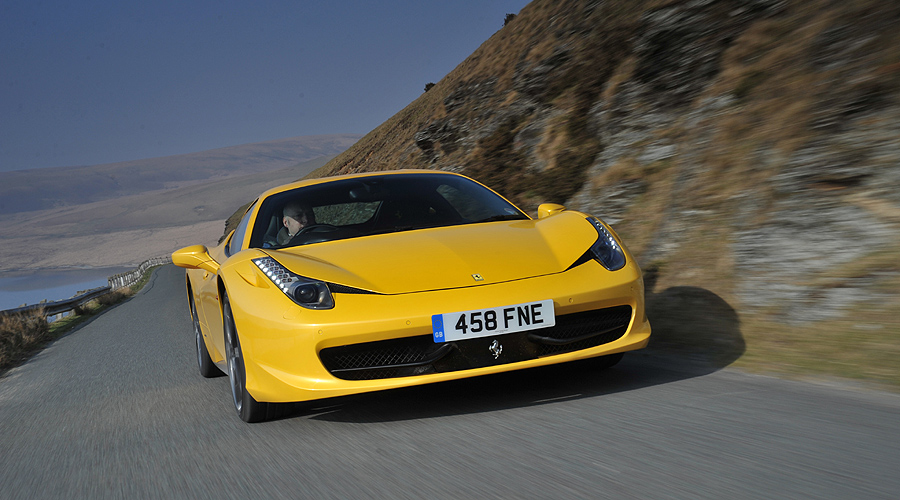
The Elan Valley in mid-Wales, often frequented by RAF pilots honing their low-flying skills, is a fitting location for the 458 Italia. For the rest of us, driving the latest mid-engined Ferrari is the nearest thing to fast jet practice, as this car seems to have more in common with a Hawk advanced jet trainer than even its predecessor, the F430.
The 458 Italia is, without doubt, the fastest car from A to B on the public road that I have ever driven. Like its forebear, it's also the standard-setting ‘drivers' car’ of the day. Let’s see what a day-long drive in the new McLaren offers but, for those seeking the ultimate four-wheeled visceral experience right away, get behind the wheel of a 458, switch the manettino to ‘Race’ and really let it go.
With six, seven, eight or even nine thousand revs on the tacho, the deliciously light and sensitive steering, allowing the smallest correction to manifest itself in inch-perfect placement on the road, and the triple-exhaust crackling and howling off nearby walls and hedges, this car will reward an enthusiastic driver like few others.
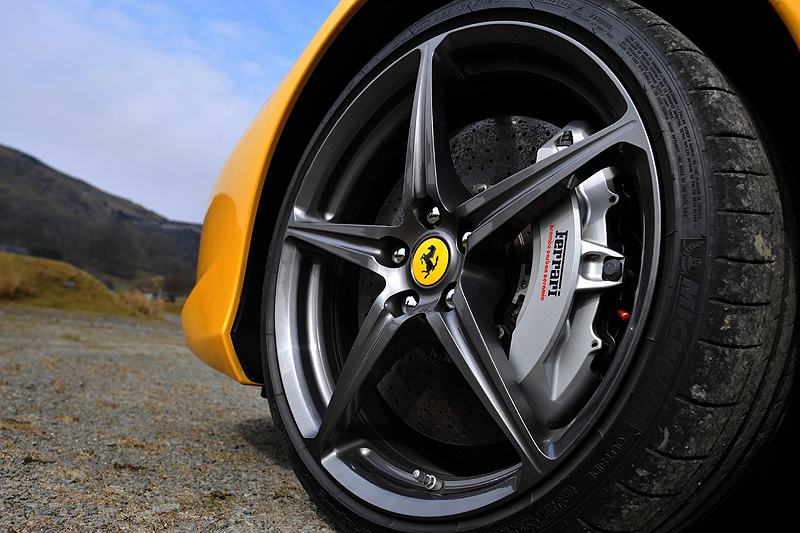

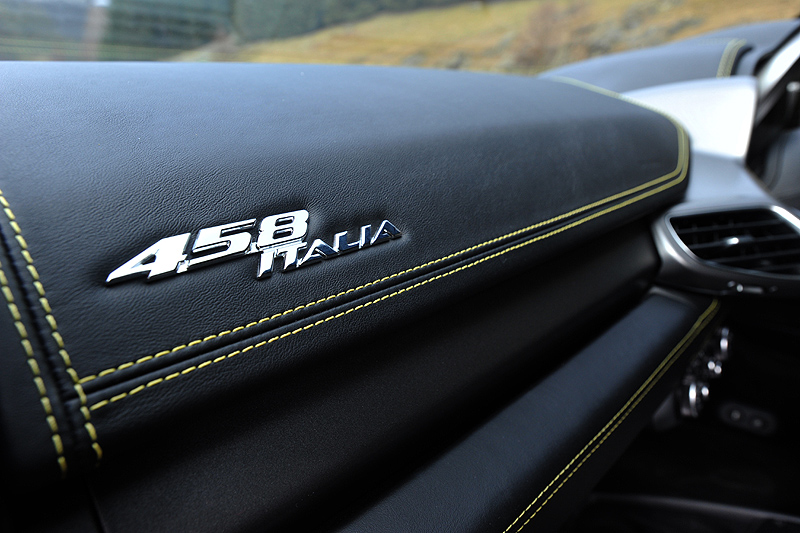
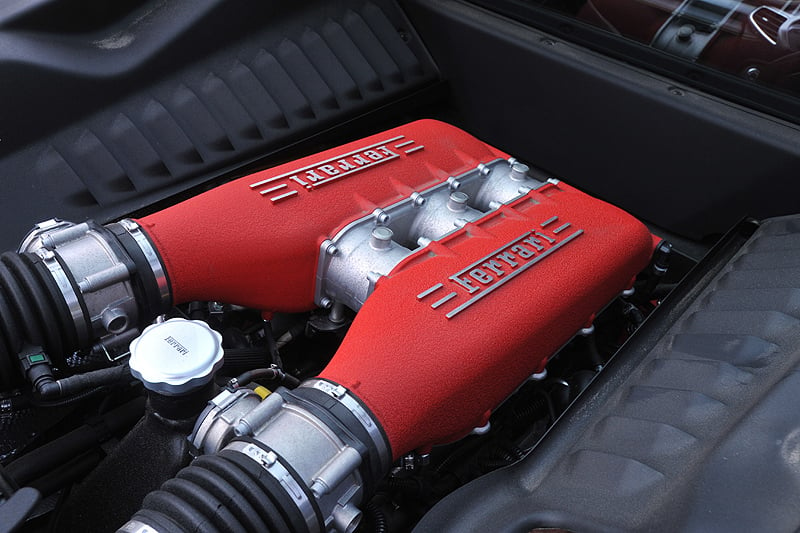
No wonder the Fiorano test track has seen some astonishing times set by factory drivers (1 min 25 sec, almost identical to an Enzo) and I would wager you could put this car up against many a GT-based racing car and it would best it by some margin.
So how did Ferrari improve on the F430? It's a touch heavier (by 30kg dry weight) and wider (10mm or so in width and length) but its all-new, direct injection engine is now 4499cc and produces another 80HP. And almost as impressive is the reduction from 420g/km to 307g/km in CO2 emissions.
That's another EIGHTY HP - if you'll permit me to shout above the glorious exhaust-note - from a modest 191cc capacity increase. And that's only part of it. Maximum torque is now 540Nm at 6000rpm, with over 80 per cent of that available from 3250rpm onwards.
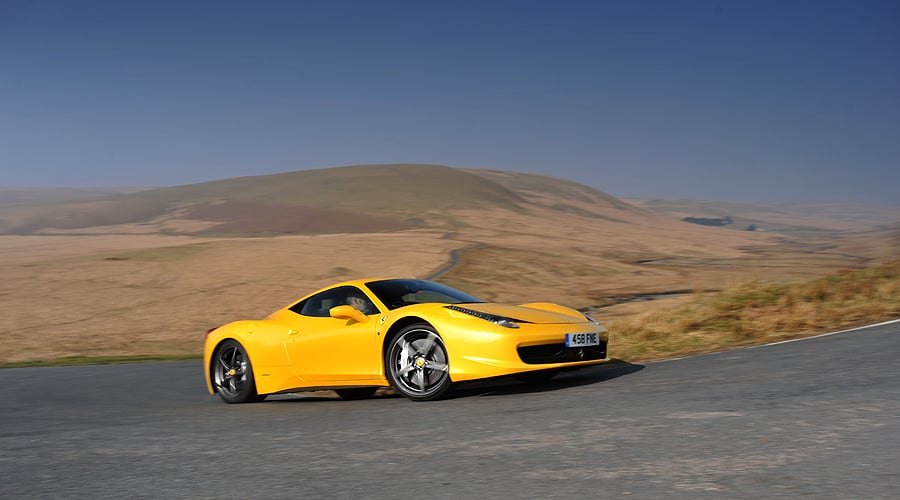
The exhilarating top-end rush of a F430 motor on full chat has been replaced by something even more potent: a growling, yet silky-furred bear of an engine with a potency unseen this side of a six-litre V12.
If anything can be more impressive than the engine, it's the way such prodigious output can be transmitted to the road. The E-Diff 3 and F1-Trac work together in such an integrated, totally unobtrusive way that all this power is oh, so addictively usable. The 'Power Off' and 'Power On' characteristics of the diff make for the very best use of traction into and out of corners. Ferrari quotes a 32 per cent improvement in acceleration when exiting a bend.
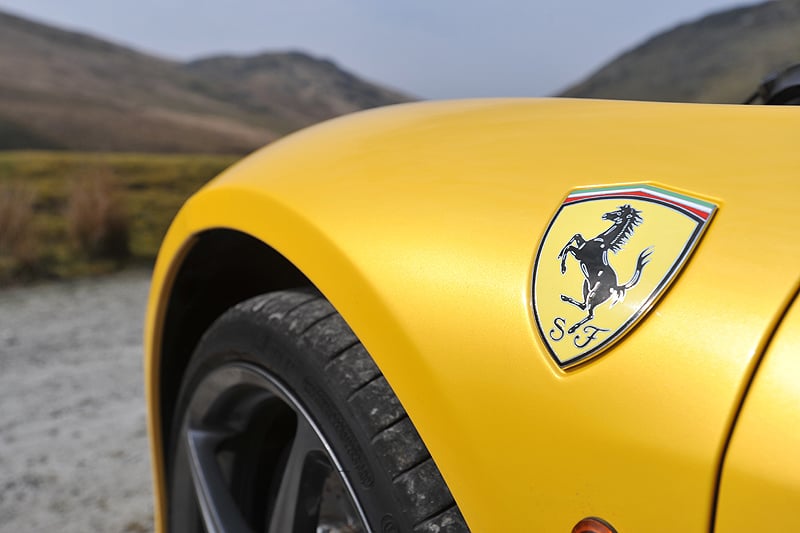
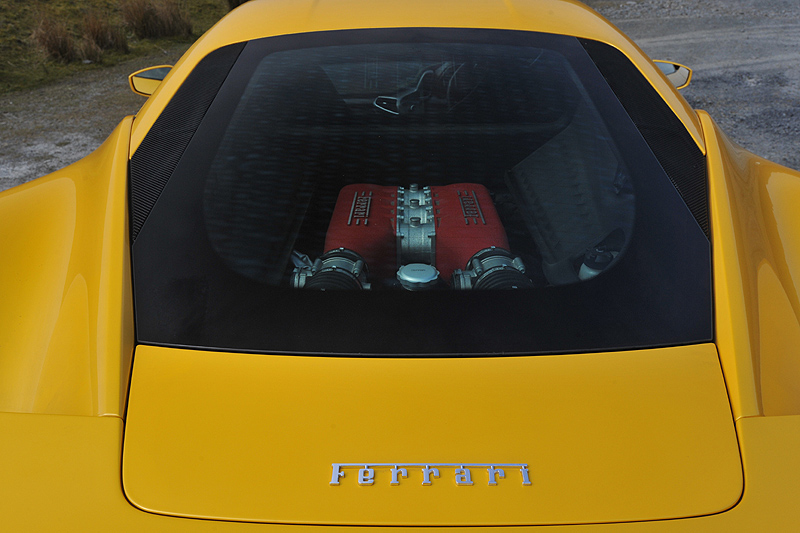
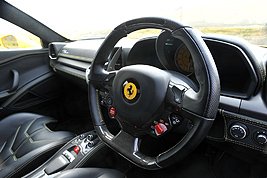
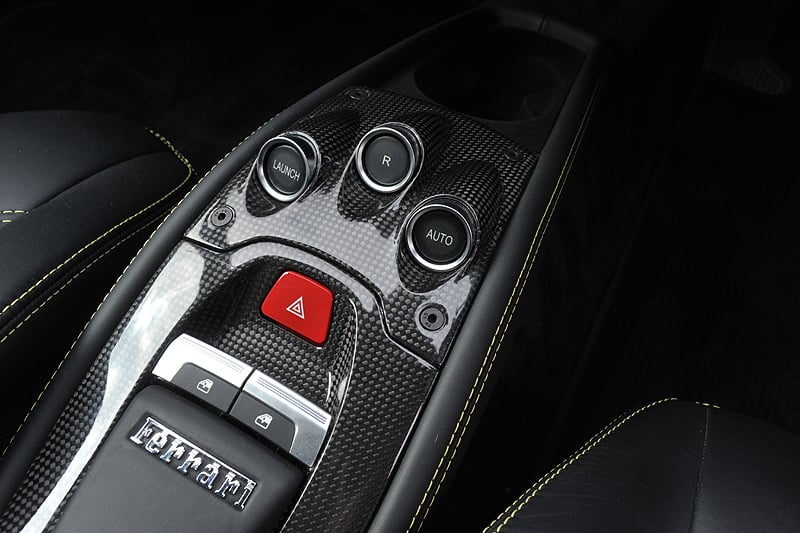
Enough, though, of the statistics and acronyms; what this translates to on the road is grip of the highest, almost all-wheel-drive order. It's possible to take a simple 90-degree right turn off a main road at 30mph, and then floor the throttle in second and third. The car remains totally composed, yet has both changed direction and accelerated seamlessly to stratospheric speeds at the same time. In carrying out manoeuvres such as these, I was indebted to the test car’s optional (£2996) LED-equipped steering wheel that signals maximum revs by way of a right light ‘count up’. As with an F1 car, one assumes, you really don’t have time to take it all in.
A quick check back to John Simister’s as-usual comprehensive first drive for Classic Driver revealed that the sensation of the car actually gaining rather than losing speed in the nanoseconds midst gear change proved I was not mistaken. Ferrari actually states that the overlap between the opening and closing phases of the two clutches is ‘zero’.
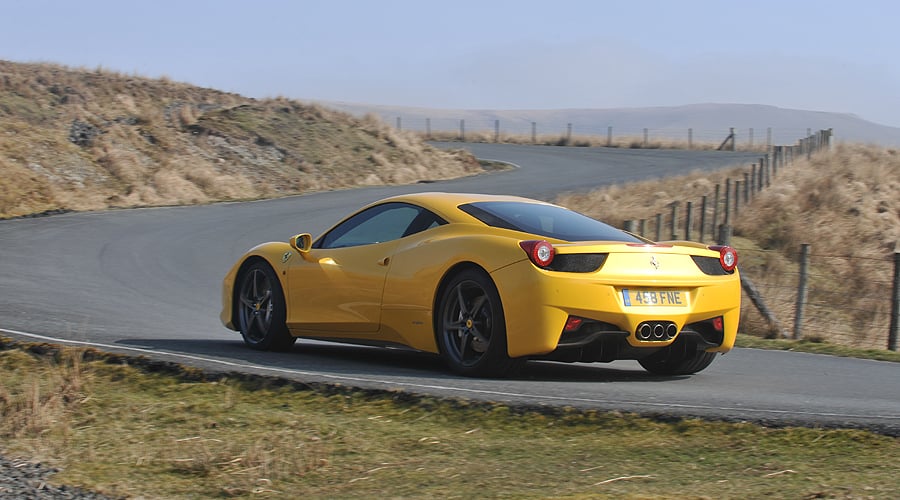
My senses translated that to ‘less than zero’, if that makes any sense – you seem to be in the next gear before you’ve left the previous one.
All of this high-speed exhilaration was in ‘Race’, the optimum setting for truly fast driving and one which is suitable for most dry roads. Ferrari also offers drivers a button that ‘decouples’ the dampers to allow for bumpy roads, and this can be employed in any of ‘Low Grip’, ‘Sport’ or ‘Race’.
It works, too, although at pace the magnificent suspension set-up can maintain the car’s composure at implausible speeds on quite uneven Tarmac, thanks mainly to the second-generation magnetorheological dampers, which bring their reaction time down from the 599 GTB’s 15 milliseconds to just eight.
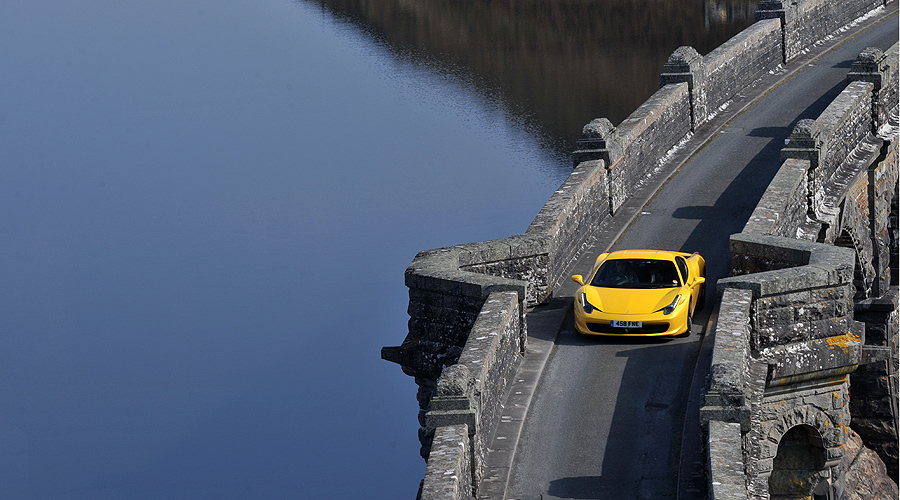
Inside the cabin, a Ferrari 458 driver can monitor all manner of data including tyre, engine and braking performance via the left-hand Vehicle Dynamic Assistance display. Three status settings – ‘Warm up’, ‘Go’ and ‘Over’ – give an overview of the car’s overall operating condition and its readiness for action. On the right, the display is devoted to satellite navigation (another extra, £2170 this time) and in-car entertainment. It also doubles as a flat-screen analogue speedo, which is in addition to the always-visible digital display on the main dash.
The driving position from the – £4961, ‘racing’ lightweight in this case – sports seats is ever-so-slightly offset, with the pedals and steering wheel nearer (by an inch here and there) to the centre of the car. And, as a first for the marque, on that wheel Ferrari has integrated indicators, lights and wiper buttons. You do get used to this pretty quickly, although it does require a little mental and manual dexterity when on full lock in town.
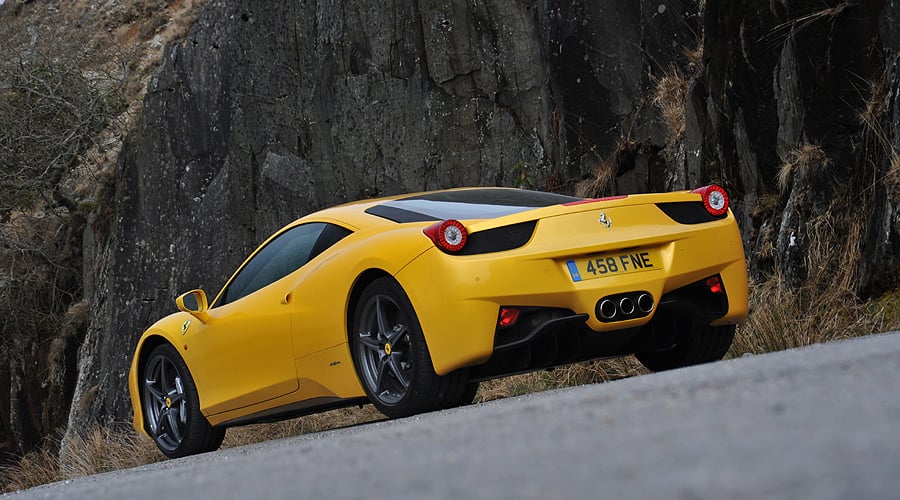
Which is where many of these cars will be seen, where owners can select ‘Auto’ which results in a familiarly ‘DSG-effect’, lumpy drive. You can also fit a couple of carry-on luggage-sized bags under the bonnet and – I am assured – a ‘travelling’ golf bag behind the seats. Ye-es... maybe.
Not only has the new car comfortably bested its predecessor in performance, it’s also moved the price point for mid-engined Ferrari performance from £140k or so in the UK to a starting, 'On The Road' price of £173,120. The generously optioned car you see here would set a potential buyer back some £200,000.
Compared with an £18 million BAE Systems Hawk, though, that is of course a bargain.
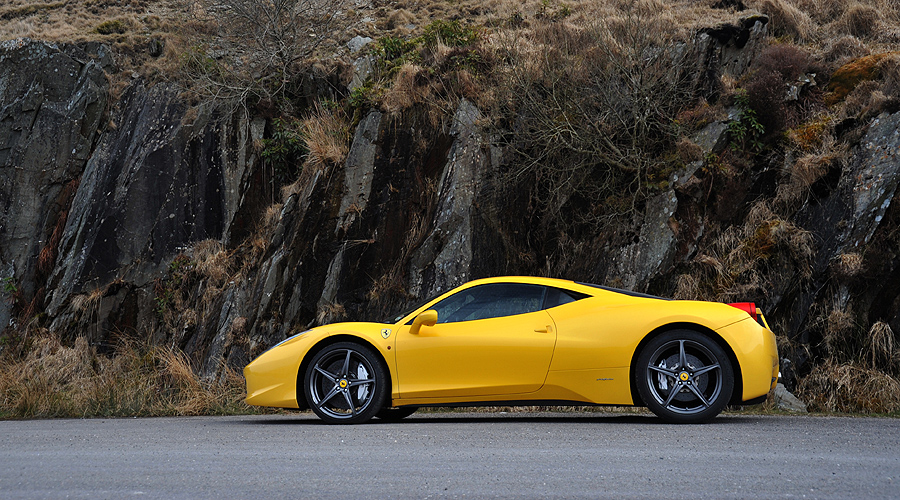
Text: Steve Wakefield
Photos: Nathan Morgan
ClassicInside - The Classic Driver Newsletter
Free Subscription!














